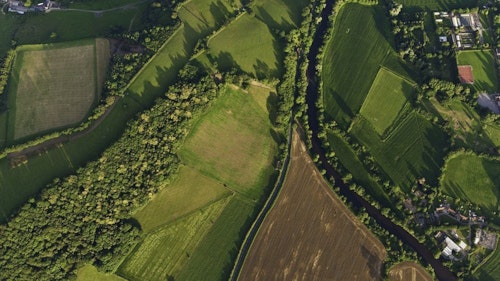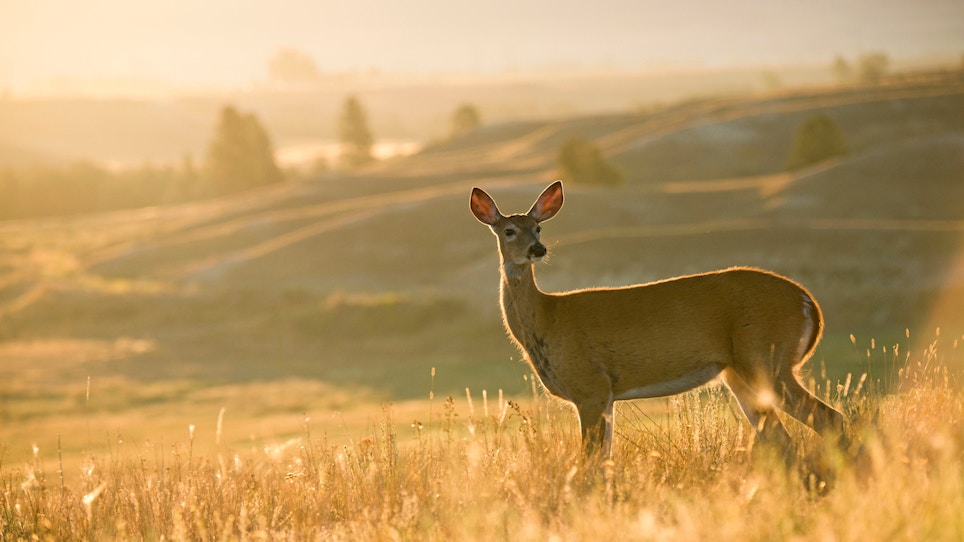Back in the 1970s and even into the 1980s, pulling the trigger on an antlerless deer was almost unheard of.
But now whitetail populations are booming throughout much of the country and opportunities to fill a freezer have never been better. Shooting a doe isn’t only allowed, it is encouraged. In fact, not shooting does is considered poor land management.
So much, in fact, hunters in some states can shoot more antlerless deer than they could possibly use in a single year. Some Virginia counties, for example, have a two doe per day limit for the entire four-week archery, two-week muzzleloader and seven-week general firearms season. A few don’t even have limits.
Just because you can shoot two does per day doesn’t mean you should. There is a fine line between underharvest and overharvest, even when your local deer herd has outgrown the available habitat.

So How Many Should You Shoot?
“That’s a complicated question that has a lot of variables,” says former Georgia Department of Natural Resources deer program leader Kent Kammermeyer. “Keeping your herd in balance with the available habitat is important. So is maintaining a healthy buck-to-doe ratio, but you need to have a good handle on what’s going on to do those. How many specifically you should remove depends on a lot of things. In some cases, you might need to shoot fewer.”
That’s because one tract of land may be able to support more deer than a neighboring tract, while one region of your state likely has better (or worse) habitat overall than another.
Kammermeyer says densities of 50 deer per square mile may be far too many in some places, but perfectly fine in another.
It comes down to habitat.
Too many deer (of either sex) can have a detrimental impact on the habitat. Simply put, your land only has so much food. An overabundance of deer can deplete available food, creating a cycle of declining resources. The worse the habitat, the less healthy your deer will be.
By keeping deer numbers balanced with the landscape, deer stay in better shape through the lean months. That, in turn, results in healthier fawns and healthier adults.
Does and a Long, Drawn-Out Rut
An overabundance of does can also lead to a long, drawn-out rut. That not only decreases the intense rut-specific behavior that so many hunters live for, it can result in lower populations down the road.
Thank the spike in coyote numbers for that.
“Ideally, we want as many fawns on the landscape at the same time to reduce predation by coyotes. If fawn births are spread out over a period of a couple months, coyotes have more opportunities to find and kill more fawns,” says Kammermeyer, who now works as a private management consultant.
Known as “prey swamping,” coyotes have too much food on the landscape at the same time. They will still kill and eat fawns, but the window for doing that is much shorter than when the fawn birthing season is spread out.

How To Take a Camera Survey on Your Property
So how do you get a balanced herd?
First, says Kammermeyer, make sure you actually have too many does or too many deer. In many instances, hunters look at a group of deer in a field and base their land’s sex ratio on that observation. What they think they see isn’t necessarily what they are actually seeing.
“We often mistake every antlerless deer for does when many of them are buck fawns, so it is important to know exactly what you have,” he says.
The best way to find out is with camera surveys. By drawing deer to specific locations, typically with bait (where legal) and then analyzing the photos, we can get a good handle on what’s out there. That should be done in the late summer when bucks are identifiable by their antler shape, size and features. Since does all look similar, you will need to do a little math to determine ratios.
Count the total number of does captured on camera, no matter how many are the same ones. Also, determine the number of bucks and the number of times each buck is photographed. For instance, if you get 20 pictures of bucks and there are five unique bucks, that works out to four photos of each buck. Use that same ratio for adult does. You can ignore fawns, since there will be an equal ratio of males to females. If you capture 50 does total, you probably have 12 or 13 does, or a ratio of three does for every buck.

Other Signs of Too Many Deer
Poor habitat will support fewer deer, and poor habitat will continue to decline if deer numbers aren’t reduced. It is an endless cycle that can take years to reverse, if not addressed.
“Look for an obvious browse line along field edges and in the woods. Deer will start eating lower-quality foods when there are too many deer and your edges will look like someone trimmed all the branches below chest height,” says Kammermeyer. “You will be able to see a long way in your woods, too. Deer will eat everything at ground level if they don’t have any choice.”
Body weights can also be a good way to determine overall herd health, but you’ll need to talk with your local biologist to determine average body weights for your region’s deer. You will also need a scale.
Kammermeyer and most other professional deer managers are proponents of detailed record-keeping. By combining trail camera data, field observations, harvest data and habitat analyses, you will have a good handle on what’s going on with your deer herd and your land. The more informed you are, the better decisions you can make.
“It’s not a bad idea to consult with a professional, either a private consultant or your regional wildlife agency biologist, at first. They can help determine your herd size and buck-to-doe ratio, the condition and quality of your habitat and what steps you can take to meet your goals,” he says.
Final Takeaways
Once you are confident of your herd size and sex ratio, and your property's ability to support (or not support) those deer, you can start taking necessary steps.
Ideal Buck-To-Doe Ratio
A buck-to-doe ratio of 1:3 is good, but Kammermeyer says 1:1.5 is ideal. If you are already in that neighborhood and your habitat is in good shape, consider shooting one doe for every buck to maintain the current ratio.
Of course, what takes place across your fence will impact your management efforts. Achieving that ideal ratio may be impossible if your neighbors are shooting every buck they can or filling every doe tag in their wallets.
Managing Small Properties and Your Neighbors
“It can be tough to manage a herd on smaller properties, but one good option is to work with your neighboring hunters. They may be shooting little bucks because they think you are. Talk to them about a management plan. You might be surprised that they want the same things you want,” adds Kammermeyer.
The Coyote Factor
Coyotes, on the other hand, have no interest in managing the deer herd. That’s why they have to be factored into your own management plans if abundant in your area.
“If you are seeing fewer fawns and more coyotes each year, then you should decrease your doe harvest. That’s the only realistic thing you can do,” says Kammermeyer. “Quite a few studies have shown that it is just about impossible to control coyote numbers, especially if you aren’t a professional trapper.”
To Shoot or Not to Shoot?
If you're still not sure, err on the conservative side and shoot only what you need. If your herd seems way out of balance, lay off the bucks for a few years and put more pressure on the does. You will not only see a better buck-to-doe ratio in the following seasons, you will enjoy a bounty of older bucks with bigger antlers.
The good news is that unless you really hammer your doe population, it is almost impossible to depress deer numbers to a point that they may never recover. Deer are prolific breeders. What’s more, state wildlife managers are good at their jobs. When things need to be adjusted, those biologists tweak seasons and bag limits. That’s why hunters in some areas are allowed to shoot a virtual unlimited number of does.






